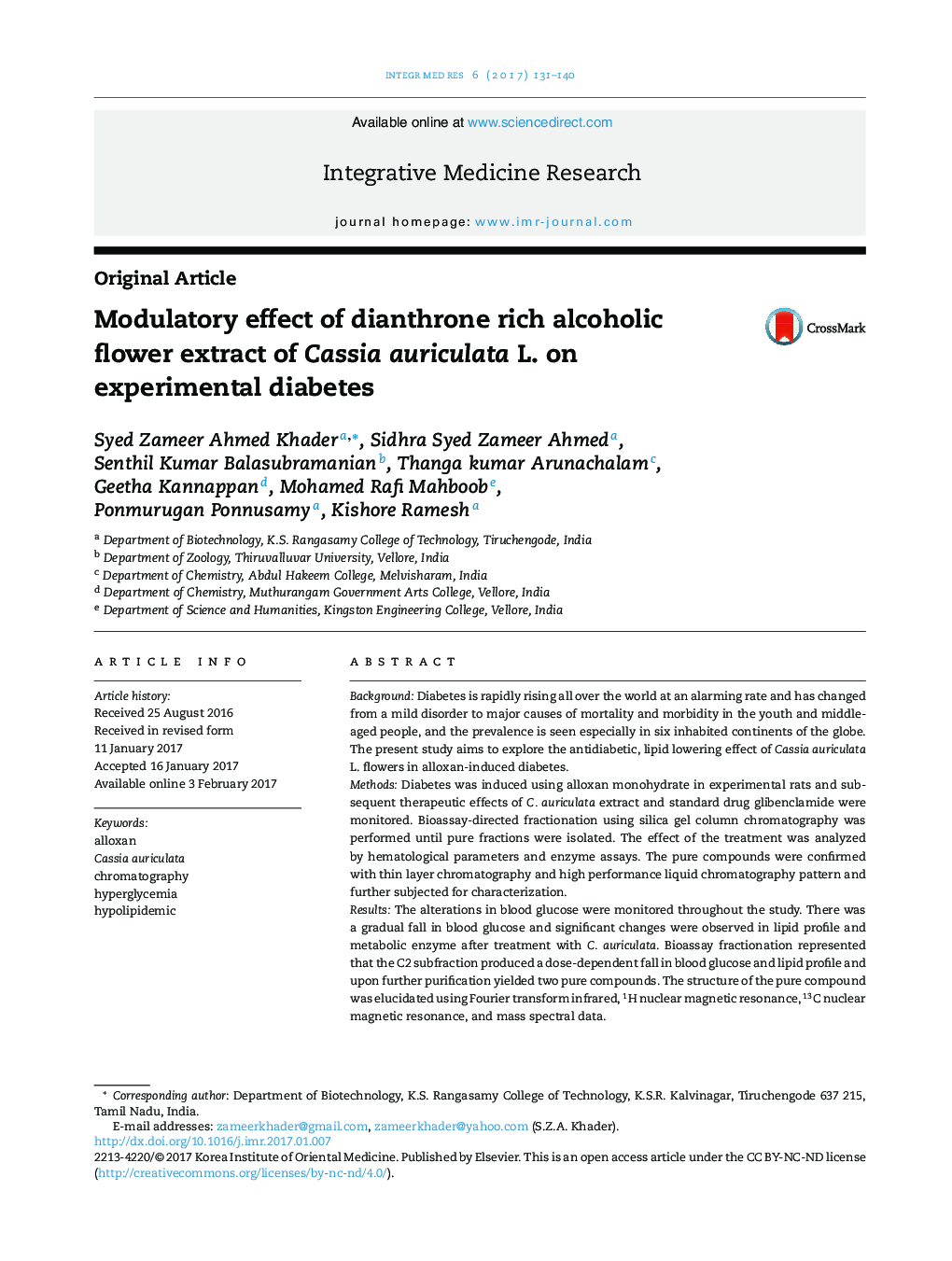| Article ID | Journal | Published Year | Pages | File Type |
|---|---|---|---|---|
| 5635099 | Integrative Medicine Research | 2017 | 10 Pages |
BackgroundDiabetes is rapidly rising all over the world at an alarming rate and has changed from a mild disorder to major causes of mortality and morbidity in the youth and middle-aged people, and the prevalence is seen especially in six inhabited continents of the globe. The present study aims to explore the antidiabetic, lipid lowering effect of Cassia auriculata L. flowers in alloxan-induced diabetes.MethodsDiabetes was induced using alloxan monohydrate in experimental rats and subsequent therapeutic effects of C. auriculata extract and standard drug glibenclamide were monitored. Bioassay-directed fractionation using silica gel column chromatography was performed until pure fractions were isolated. The effect of the treatment was analyzed by hematological parameters and enzyme assays. The pure compounds were confirmed with thin layer chromatography and high performance liquid chromatography pattern and further subjected for characterization.ResultsThe alterations in blood glucose were monitored throughout the study. There was a gradual fall in blood glucose and significant changes were observed in lipid profile and metabolic enzyme after treatment with C. auriculata. Bioassay fractionation represented that the C2 subfraction produced a dose-dependent fall in blood glucose and lipid profile and upon further purification yielded two pure compounds. The structure of the pure compound was elucidated using Fourier transform infrared, 1H nuclear magnetic resonance, 13C nuclear magnetic resonance, and mass spectral data.ConclusionThe present study clearly indicated the significant antidiabetic effect of C. auriculata and lends support for its traditional usage without evident toxic effects.
